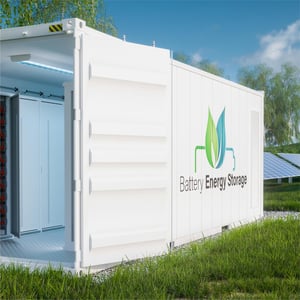Hardman and Co Analyst Mike Foster caught up with DirectorsTalk for an exclusive interview to discuss his research report ‘Secure Income REITs’.
Q1: Mike, you’ve recently published a research report called Secure Income REITs, why that name and which companies does it cover?
A1: We see some very significant potential desire by investors to acquire relatively safe yet still growing streams of income, which are asset based. When I say potential, what would be more accurate is to point to the fact that about £750 million has been raised in equity in just the past 6 months into 17 real estate investment trusts which our report looks at.
These 17 now have got a market capitalisation of just under £11 billion so it’s a sizeable and liquid sector which has been successfully raising equity and to talk about why they are seen by us as relatively secure income REITS, if I may, I’ll list the companies and give a thumbnail summary of what they invest in.
First, all bar AEW UK Long, Secure Income REIT and LXi, which we list in the document, are very sector specific, each with a tightly focused asset class being invested into. AEW UK Long and LXi both acquire real estate with long leases and would seek, where appropriate, to recycle capital through disposals and both have banked profits in this manner. Secure Income REIT invests in mid-market hotels, leisure and other assets with long leases and good covenants. All 17 REITs in our report invest exclusively in the UK apart from Secure Income and Primary Health Properties which are 90% – 95% in the UK.
Q2: You mentioned a few there, I think there’s probably another 14 left?
A2: Yes, so there are 17 in all listed in our document, so I’ll just go quickly through them.
Assura and PHP, Primary Health Properties, invest in primary medical assets, the NHS policy is to seek to move emphasis from secondary, that’s hospitals, into community hub surgeries. PHP has notably grown its dividend unbroken each year of its 22-year life and has in the last weeks merged with the very similar MedicX Fund REIT, creating £4 million a year synergies.
Two REITs focus on the social housing, that’s Civitas and Triple Point acquire supported, specialist housing dedicated to long-term occupation by people with specific requirements.
Residential Secure Income owns shared ownership properties with other local authority housing and the retirement sector housing.
PRS REIT has a growing portfolio with open market family housing, its developer partners, and PRS REIT takes no development risk, tend to benefit from PRS REIT’s early investment into the developer site, hence the developers would deal with PRS REIT in advance of the normal market and therefore at discounted prices. That means that PRS REIT can offer mid-income families a house to live in at a rent which is affordable and without any subsidy so there’s scope for steady, long-term rises in rents and values there.
There are two purpose-built student REITs, Empiric and GCP, we also note two REITs with distinct and differentiated styles, they invest care homes and that’s Impact and Target REITs.
We then have two medium-sized warehouse REITs, again with distinct styles, Urban Logistics REIT and warehouse REIT. Finally, there’s a couple more, there’s a Supermarket Income REIT which does exactly what the name says with long leases and Tritax Big Box which also does what the name says, big logistics sites.
Q3: It’s quite a long list, isn’t it?
A3: Yes, I would make three points if I can, just to tie it all just a bit more together.
First, all of these aim for the same thing which is a useful dividend yield and a dividend which is growing securely.
Secondly, they seek liquid sectors and have all proven their ability to deploy investor funds, some have equity valuations well over £1 billion and a number are soon knocking on that door.
Thirdly, the sub-sector we look at which is UK long dated, secure asset backed has those 17 REITs but as recently as 2016 there were only 8, at a similar point in the last cycle, 2008, there were only 3. So, it’s a significant growth area and, given the cycle perhaps near the top, no wonder people are looking for more security long-term covenants.
Q4: Now, you mention the cycle, does that mean you like these types of real estate stocks in preference over others?
A4: Well, we’re looking at two cycles really.
The first, the long-dated interest rate cycle, long interest rates continue to fall, even with the supposed GDP expansion that we’re having in places like the UK, the US and elsewhere, and that means investors are having a more and more difficult time buying income at anywhere near attractive yields.
The second cycle, we have the UK real estate market which has always been cyclical, valuations are growing but now only barely and this year, many commentators see the rent weakness in retail starting to get into modest rent falls in other sectors.
However, and this is a key point, everything has its risk and its opportunities and its price. We do like a couple of wider sectors in the UK real estate markets, regional assets would be one, for example, but I don’t want to get deflected into talking about the whole UK real estate market. This sub-sector, in this particular note, has asset-backed long income streams and we urge potential investors obviously to look into the report as each stock has its attractions and its risks and its price.
Q5: You referred to ‘anywhere near attractive yields’, at what level are the dividend yields?
A5: The average dividend yield, actually a historic one, on UK real estate stocks if we’re looking at the FTSE 350 sector is around 4.3%. The average in the sub-sector in our document is 5.1%, naturally, the yield on risk-free assets like gilts is much lower.
Q6: So, are you saying that the 5.1% average dividend yield is attractive, and I guess, are you also saying then that the secure sub-sector has minimal risks?
A6: Yes, there are two parts, let’s start with the risk part of it because clearly that’s important.
All these stocks, in the sub-sector or not have risks, the leases tend to be long in the stocks that we’re looking at, over 10 years even over 20 years, but not all are and a long lease is really only as good as the income generating capacity of the asset, even if the lease were to be renegotiated if something happened. So, we don’t like over-rented assets, we look at income but there’s a risk if it’s all about the contractual income and not enough about the assets.
As regards the dividend yield, yes, we see this set against the 10-year risk-free government swap rates of interest and note that those are a really low 1.4% at the moment. Clearly, these non-government guaranteed equities have a risk pick-up and hence a yield pick-up.
Is the 5.1% average enough to compensate for that risk pick up? Well, we note that all are seeking a progressive dividends and we do urge investors to very much to dig deeper into some of these questions, the risks and the opportunities, it’s crucial detail and it is touched on in the report.
Can I just say one more thing that the title of the report is ‘Secure income REITs’ and obviously security is always relative and so what we aim to achieve is to present a range of UK real estate backed assets which have been intelligently invested in and structured in a robust and, importantly, transparent and relatively efficient way as regards costs. The security is not absolute and permanent, but the assets and the structures give them a solid starting point, we consider.
Q7: We were talking earlier, and you mentioned one pair of key statistics about what performance these types of assets gave through the last cycle, can you expand on that?
A7: Yes, like I said to an earlier question, there’s only a very limited number of relatively secure-asset based REITs in the market now and a really small number in 2008.
If you look at performance from the end of 2007 to end of 2012, a very difficult 5 years, UK primary medical assets, if you remember, that’s the likes of Assura, PHP and MedicX which PHP merged with, they generated total returns per annum of 5.6% in those difficult 5 years. This is not bad in absolute terms and brilliant in relative terms with the whole UK real estate market generating only 0.5% a year, that’s the MSCI index, in those 5 difficult years.
Looking at the whole of the last cycle, from end of 2007 for the next 10 years, UK primary medical assets generated total returns of 7.9% per annum, this was an excellent performance in relative terms looking at other major asset classes because gilts generated a pretty decent 6.0% a year and equities a reasonably decent 5.9% through that cycle, total return. The broader UK real estate market achieved 4.9% so a good outperformance from those safe stocks looking through the whole cycle, the down bit and the up bit in the cycle, it outperformed.
So, the past has to be a good starting point for exploration of how this sub-sector is set-up for the coming years and that’s what we’re looking at in the document.










































